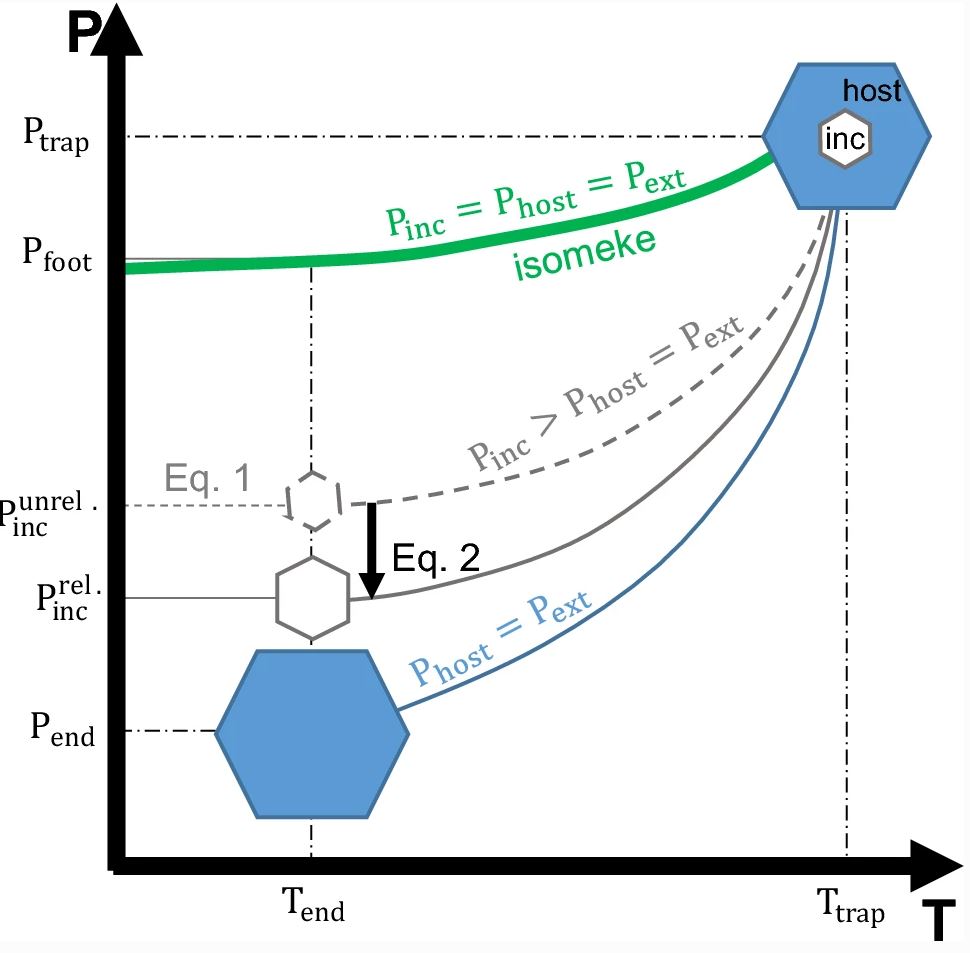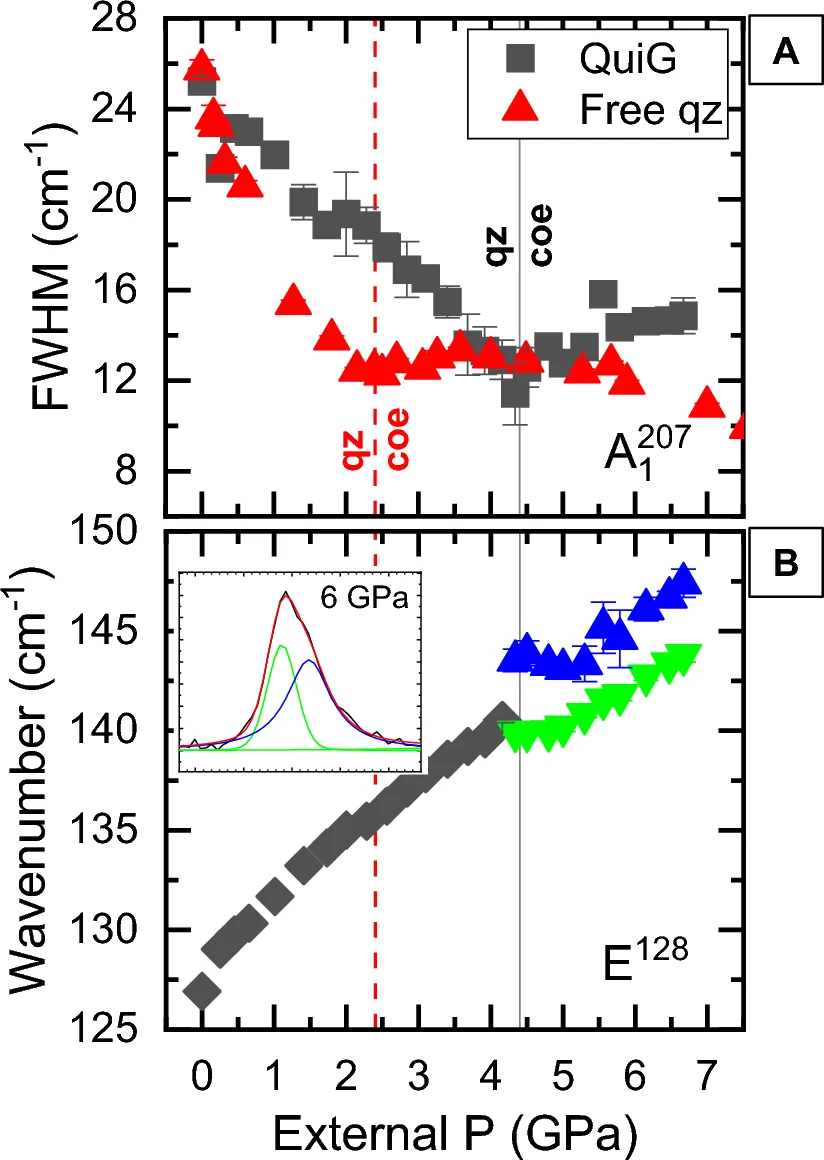First high-pressure laboratory experiment on host-inclusion systems
In his new manuscript Nicola Campomenosi describes the results of the first laboratory experiments where quartz in garnet host-inclusion systems have investigated under high pressure conditions using Diamond Anvil Cell (DAC).

The experiment has been carried out to elucidate the behaviour of QuiG at elevated pressures. Three quartz in garnet (QuiG) samples with Pinc close to 0 GPa at room conditions have been investigated.
We provide the first experimental laboratory evidence to demonstrate that upon pressure increase, the garnet host acts as a shield to the softer quartz inclusion. Consequently, the Pinc increases with a smaller rate compared to that of the external pressure.
Up to 2.5 GPa, the evolution of Pinc calculated from the Raman data agrees very well with prediction from the equations of state. The behaviour of a quartz inclusion in a relatively thin host samlpe was explored up to external pressures of 7 GPa.

Our results indicate that the shielding effect of the host can maintain the quartz inclusions thermodynamically stable up to about 2 GPa above the equilibrium quartz–coesite phase boundary.
In addition, the partial shielding leads to the development of anisotropic symmetry-breaking stresses and quartz inclusions undergo a reversible crossover to a lower symmetry state. Given that the presence of non-hydrostatic stress may influence the quartz-to-coesite phase boundary, especially at elevated temperatures relevant for entrapment conditions, our results emphasize the importance of elastic anisotropy of QuiG systems, especially when quartz inclusion entrapment occurs under conditions close to the coesite stability field.
